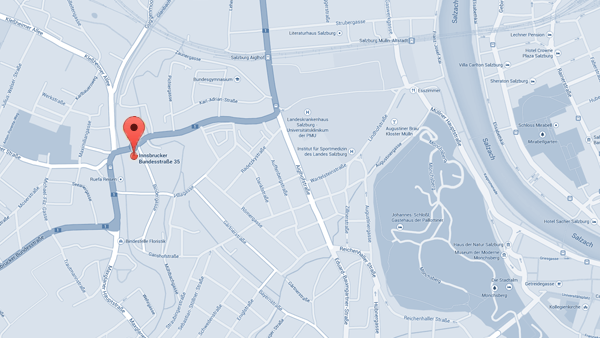Fertility Treatment using
Preimplantation Genetic Diagnosis (PGD)
in Austria
A new Law on Reproductive Medicine (Fortpflanzungsmedizingesetz - FMedG) is effective in Austria as from 2015, allowing the genetic work-up by means of preimplantation genetic diagnosis (PGD) in cases of medical indication.
→ see also: "Changes in the Law on Reproductive Medicin - New Treatment Options in Austria"
Each treatment at the IVF Centers Prof. Zech is based not only on compliance with legal regulations and ethical as well as medical principles, but is also focused on patient well-being and the health of all persons involved.
The chances of achieving pregnancy following IVF treatment with the use of PGD are very good, provided that the treatment complies with the highest medical standards and is performed by an experienced team of professionals. This includes the use of modern laboratory techniques (to be used in medically indicated cases that are provided for by law), such as:
- Polymerase Chain Reaction (PCR)
- Array CGH
- Next Generation Sequencing
- Fluorescence In Situ Hybridisation (FISH)
- SNP Array
- Karyomapping
Such laboratory techniques in conjunction with optimized culture and embryo transfer techniques provide a sound basis for helping make the dream of couples dealing with undesired childlessness come true.
Use of Preimplantation Genetic Diagnosis (PGD)
In situations where a couple seeking treatment for infertility issues has a proven genetic predisposition for a serious genetic disorder which might be passed on to their offspring, or for example when the couple is faced with several previous unsuccessful IVF attempts or miscarriages, and the results point to genetic causes, further clarification through PGD is an option. The use of PGD allows for the screening of embryo cells in order to detect chromosome disorders (aneuploidy and e.g. translocation) and genetic diseases (e.g. cystic fibrosis) prior to embryo transfer.
Sequence of Fertility Treatment using Preimplantation Genetic Diagnosis (PGD)
1. Initial Consultation
Analysis of the couple's results by the treating doctor, detailed gynecological examination and ultrasound scan, discussing of legal provisions, risks, costs, duration and sequence of treatment.
→ more information on the Initial Consultation
2. Ovarian Stimulation
At the beginning of fertility treatment, the woman has to take certain hormones (such as gonadotropins = pituitary hormones) in order to induce the growth of multiple follicles in the ovary. The follicles contain the oocytes.
→ more information on the Ovarian stimulation
3. Oocyte Retrieval
The follicles are imaged by means of cutting-edge ultrasonic technology and the follicular fluid is aspirated under visual guidance. This procedure is performed under short anesthesia and is completely painless. Biologists then place the retrieved oocytes in a culture dish to identify them before placing them in special nutrient media. After the removal of the cumulus cells (nutritive cells), conclusions can be drawn as to the degree of oocyte maturity and an appropriate post-maturing process may be initiated.
→ more information on the Oocyte Retrieval
4. Semen Collection
With semen collection on the day of oocyte retrieval, the male partner is expected to make his contribution and produce a semen sample. Semen specimens are usually collected by masturbation. The ejaculate has to be collected under hygienic conditions - either at the IVF center, where we provide appropriate facilities or at home (Important: No more than two hours may elapse between ejaculation and handing over the sample at the IVF center!).
5. Fertilization of the Oocytes (ICSI/IMSI)
The mature oocytes are fertilized by the partner's sperm. The procedure involves injecting a single sperm cell directly into the cytoplasm of an oocyte using a very fine needle after having assessed and isolated the individual spermatozoids under 6.000 to 10.000 times magnification (IMSI - "Intra-cytoplasmic Morphologically Selected Sperm Injection ").
6. Blastocyst Culture
The embryos are placed in a special culture medium and are then incubated for five days until they have developed to the so-called blastocyst stage. Those blastocysts that show a high implantation potential are selected for embryo transfer (blastocyst selection).
→ more information on the Blastocyst Culture
7. Diagnosis performed on the Embryo
Prior to the genetic analysis, either the so-called polar bodies are removed from the oocyte or cellmaterial is extracted from the embryo at the blastocyst stage. This procedure is referred to as trophectoderm biopsy (trophectoderm = outer part of the blastocyst). The results will then be discussed with the couple and further steps will be taken.
8. Embryo Transfer
If no genetic disorder is present, embryo transfer will be performed. A thin and flexible catheter is carefully guided through the vagina and cervix and the embryo(s) (transfer of a maximum of two embryos) is/are deposited into the uterus. This is done on the fifth day after the egg retrieval, which corresponds to the moment in natural reproduction when an embryo reaches the uterus where it starts to implant after having travelled through the fallopian tube.
Chronology - IVF Centers Prof. Zech | Preimplantation Genetic Diagnosis (PGD)
In 1996, we established a cooperation with the group of Prof. Yuri Verlinsky ("Reproductive Genetics Institute - RGI" in Chicago) - who pioneered in the field of genetic analysis of embryos and polar body diagnosis - and we subsequently performed the first polar body diagnosis in Austria. In close cooperation with the RGI and their pioneers, our team has further developed these techniques since then.
Encouraged by existing legal possibilities in Italy, in 2001 we founded the IVF Center Prof. Zech in Meran to be able to successfully offer these PGD techniques.
Due to legal restrictions that came into force at a later point in time in Italy, we felt compelled to look for alternatives. We thus established the IVF Center Prof. Zech in Pilsen, Czech Republic, where the focus is on preimplantation genetic diagnosis and egg donation. Diagnostics performed on polar bodies and embryos on day 3 (removal of 1 to a maximum of 2 cells from the eight cell organism) was state-of-the-art at the time when it came to the analysis of chromosomes and monogenetic diseases (aneuploidy screening and detection of translocations, PCR).
In 2012, a joint initiative with the scientists from PGDIS (Preimplantation Genetic Diagnosis International Society) was launched at the world congress in Bregenz, ushering in a new era in embryo diagnostics: "11th international Conference on Preimplantation Genetics Diagnosis: Where to next for PGD? From polar body to blastocyst - the evolving genome" (www.pgdis-2012.com) Prof. Alan Handyside was its scientific coordinator. In 1990, Prof. Handyside was the first worldwide to successfully perform PGD involving the testing of an embryo in its eight-cell stage in order to exclude a sex-linked disease. With the start of this so-called "second era of PGD" on the occasion of the 11th World Congress in Bregenz, new technologies such as "24sure" as well as "Next Generation Sequencing" were first presented to a wider scientific audience by the pioneers of these new platforms. In the course of further discussions, the technique of trophectoderm biopsy on day 5 embryos (blastocyst) was widely established. Biopsy performed on day 3 embryos may therefore be considered "obsolete".
The method of blastocyst culture and selection of the best embryos on day 5 are techniques that have constantly been refined since approximately 1996. Combined with the establishment of new techniques for freezing embryos at the blastocyst stage by means of vitrification ("VitriSafe"), they enabled us to successfully implement this "second era of PGD".
All these techniques (including those of the second generation) are established at our IVF Center Prof. Zech- Pilsen and can now for the first time be used at our locations in Bregenz and Salzburg in compliance with the new Austrian Law on Reproductive Medicine. Together with the international scientific community, we are constantly developing the techniques for preimplantation genetic diagnosis.
We can help you!
A pleasant atmosphere, empathy, medical knowledge and expertise are especially important when it comes to fulfilling your desire to have children. We hope that our "striving for excellence" will also gain your trust, and we are looking forward to welcome you in Salzburg.



